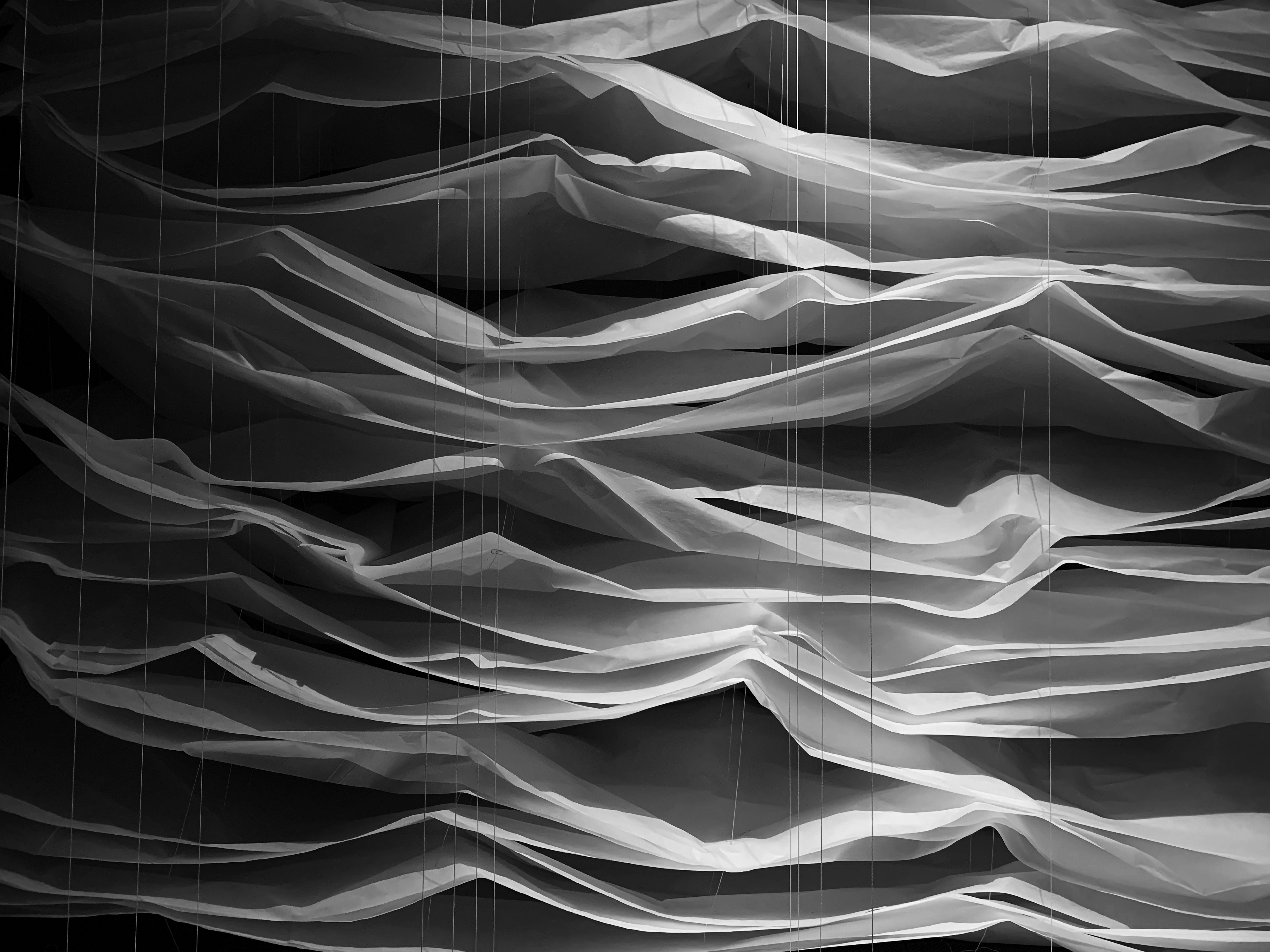

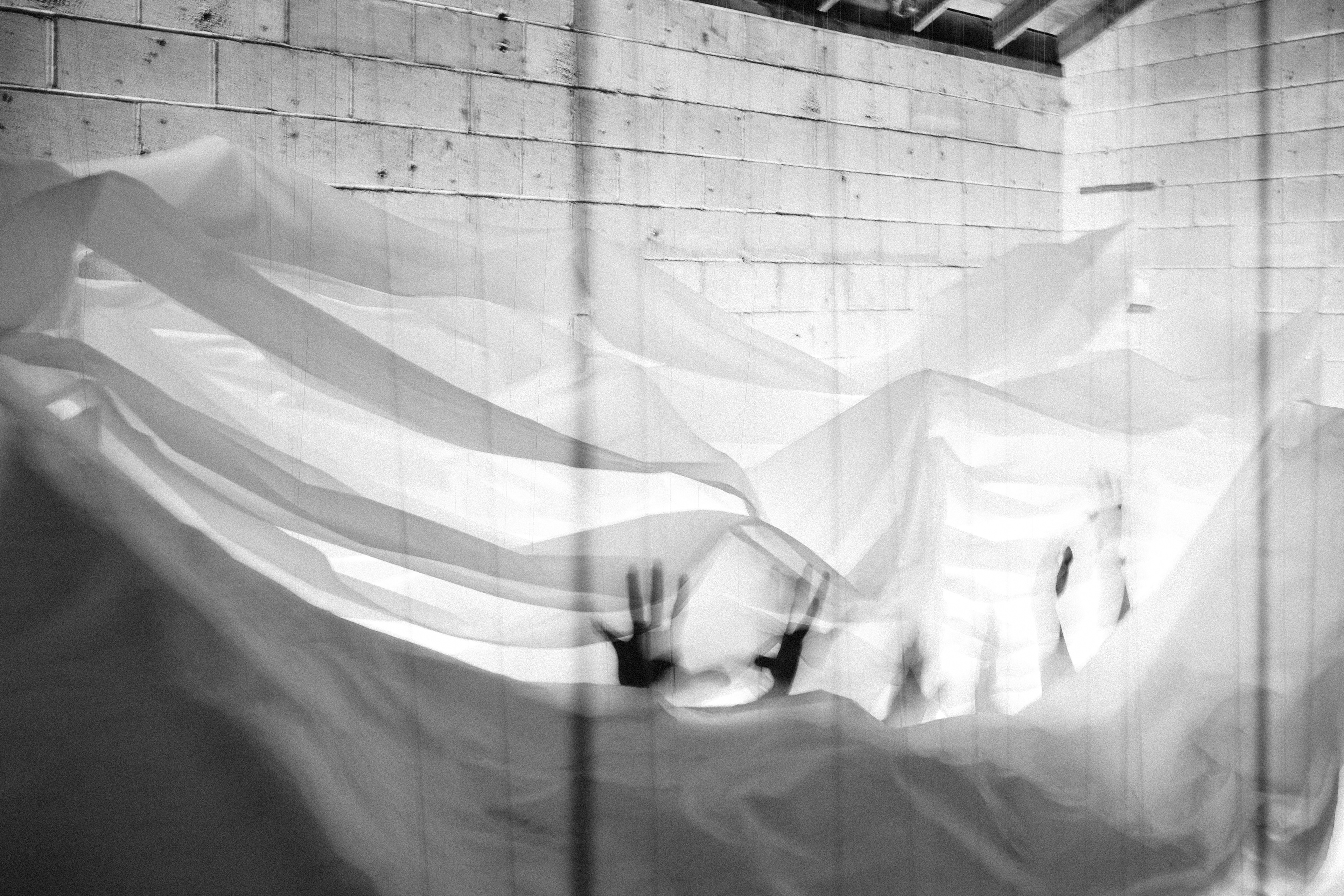

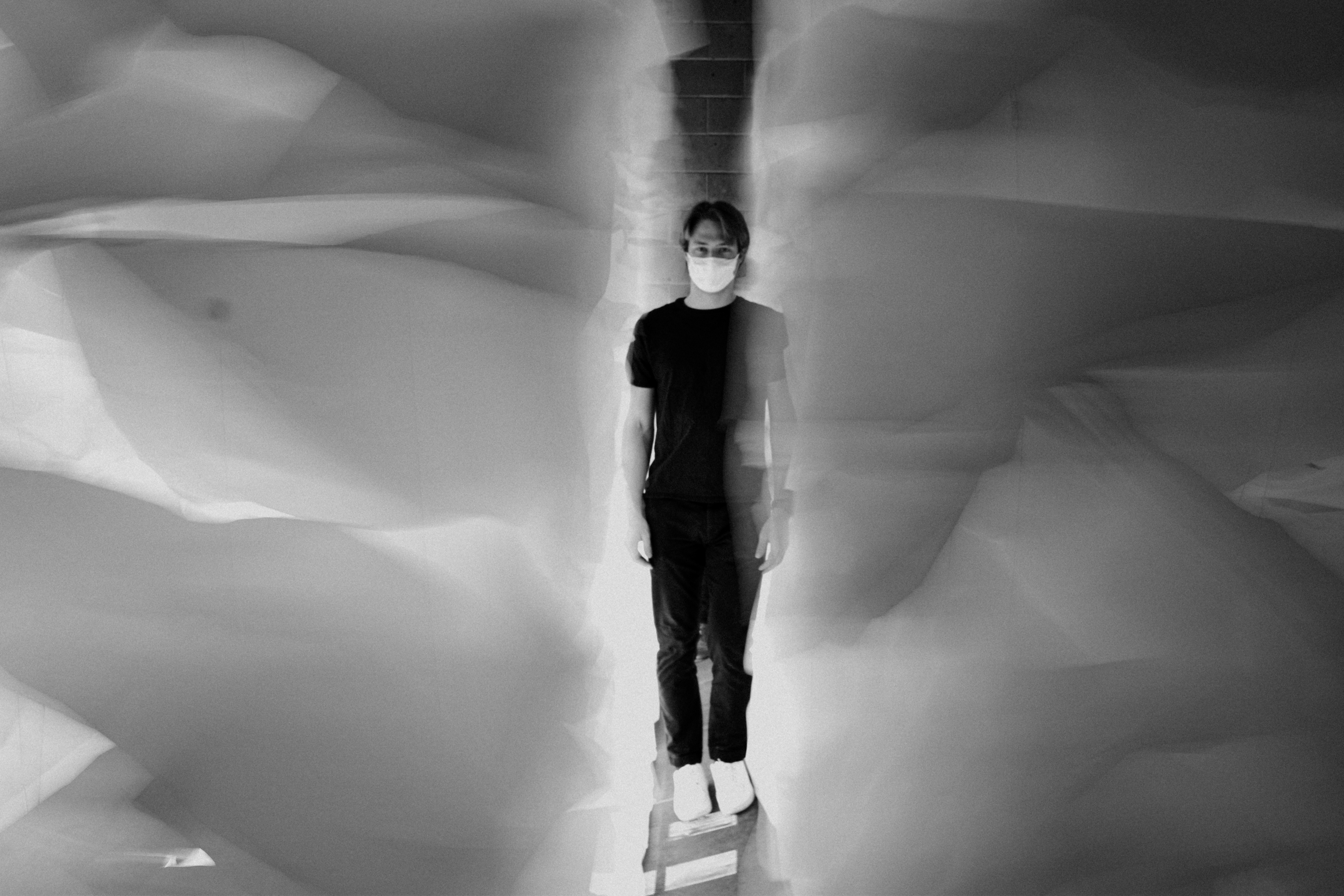
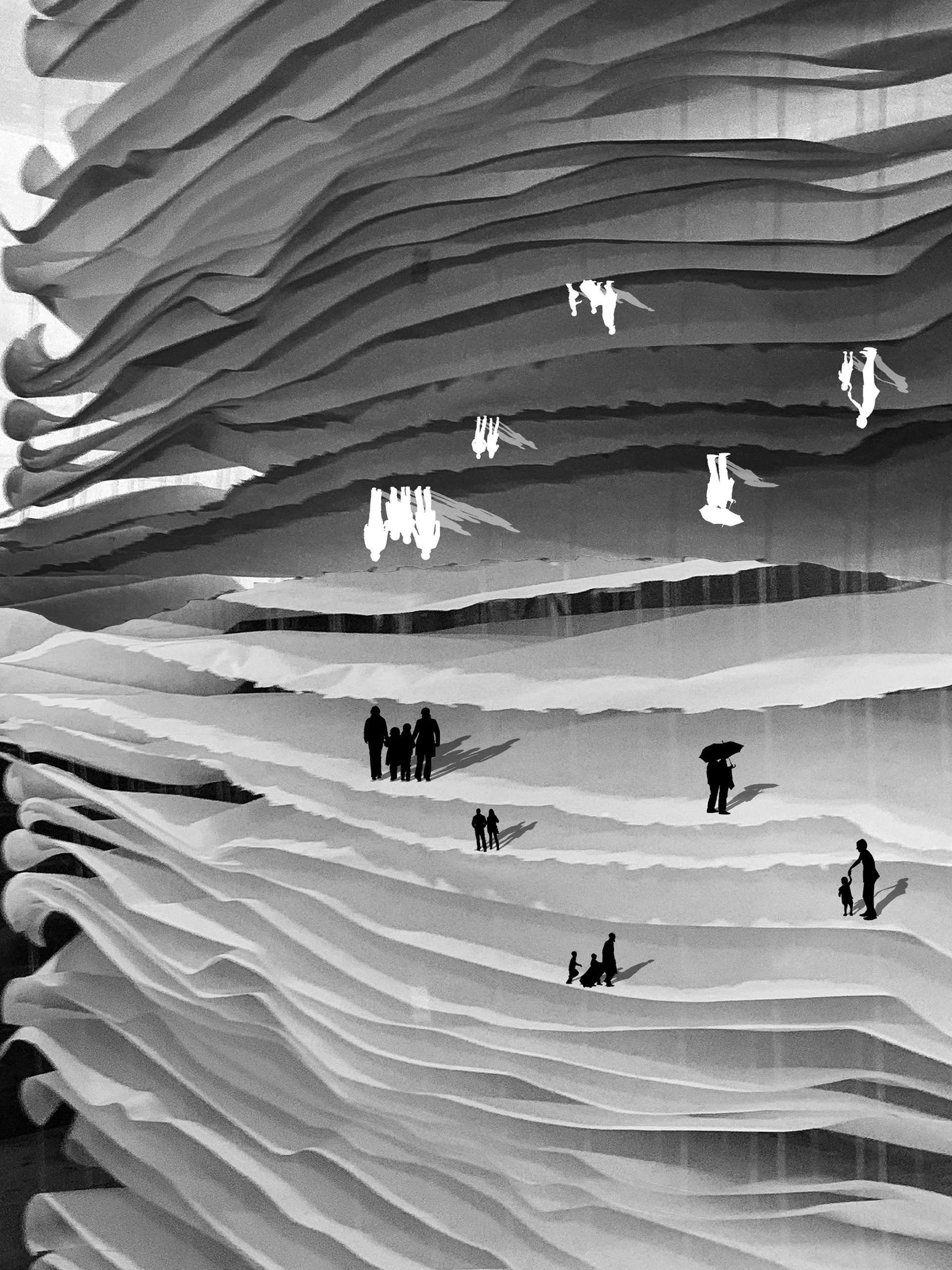

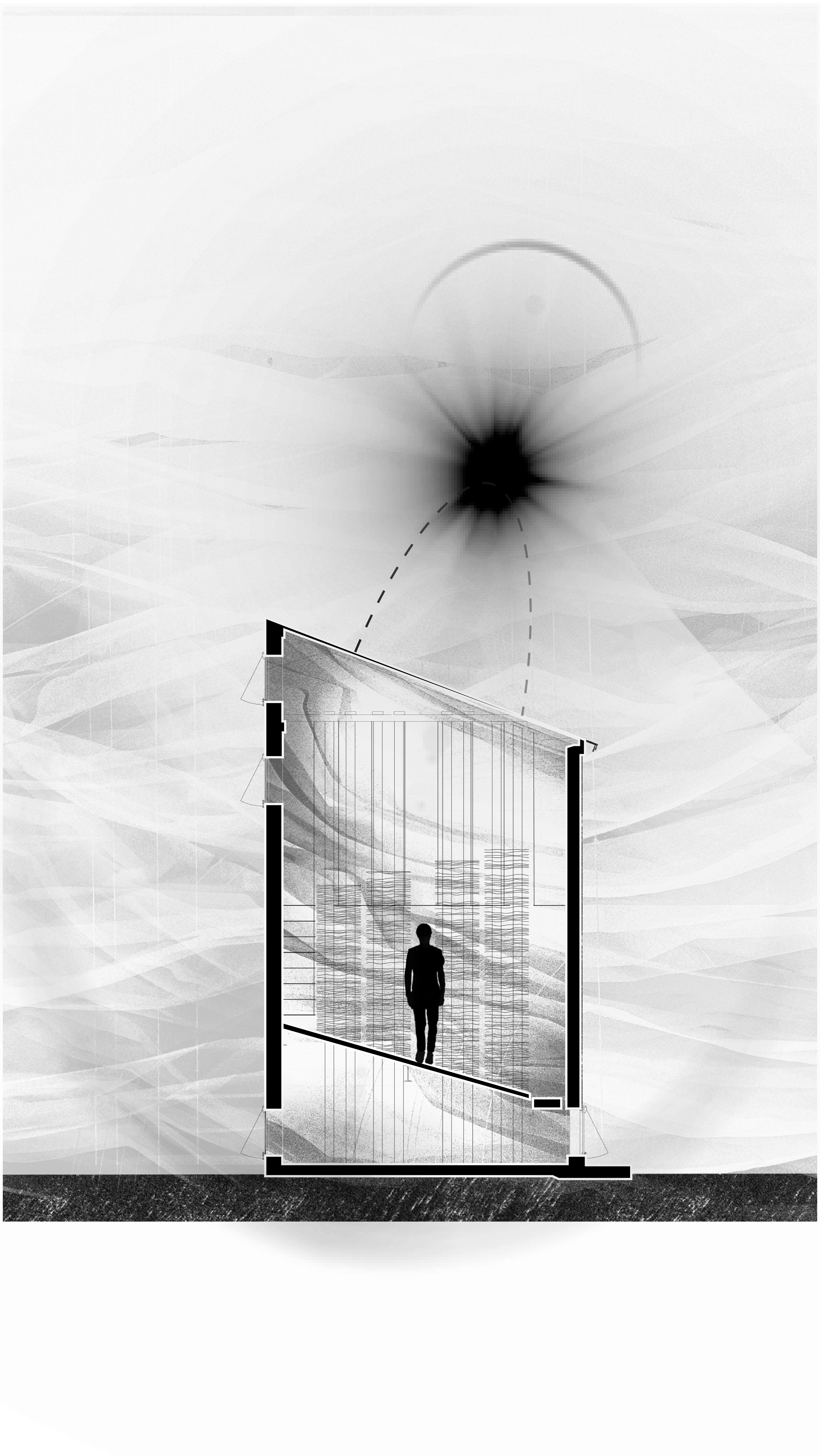












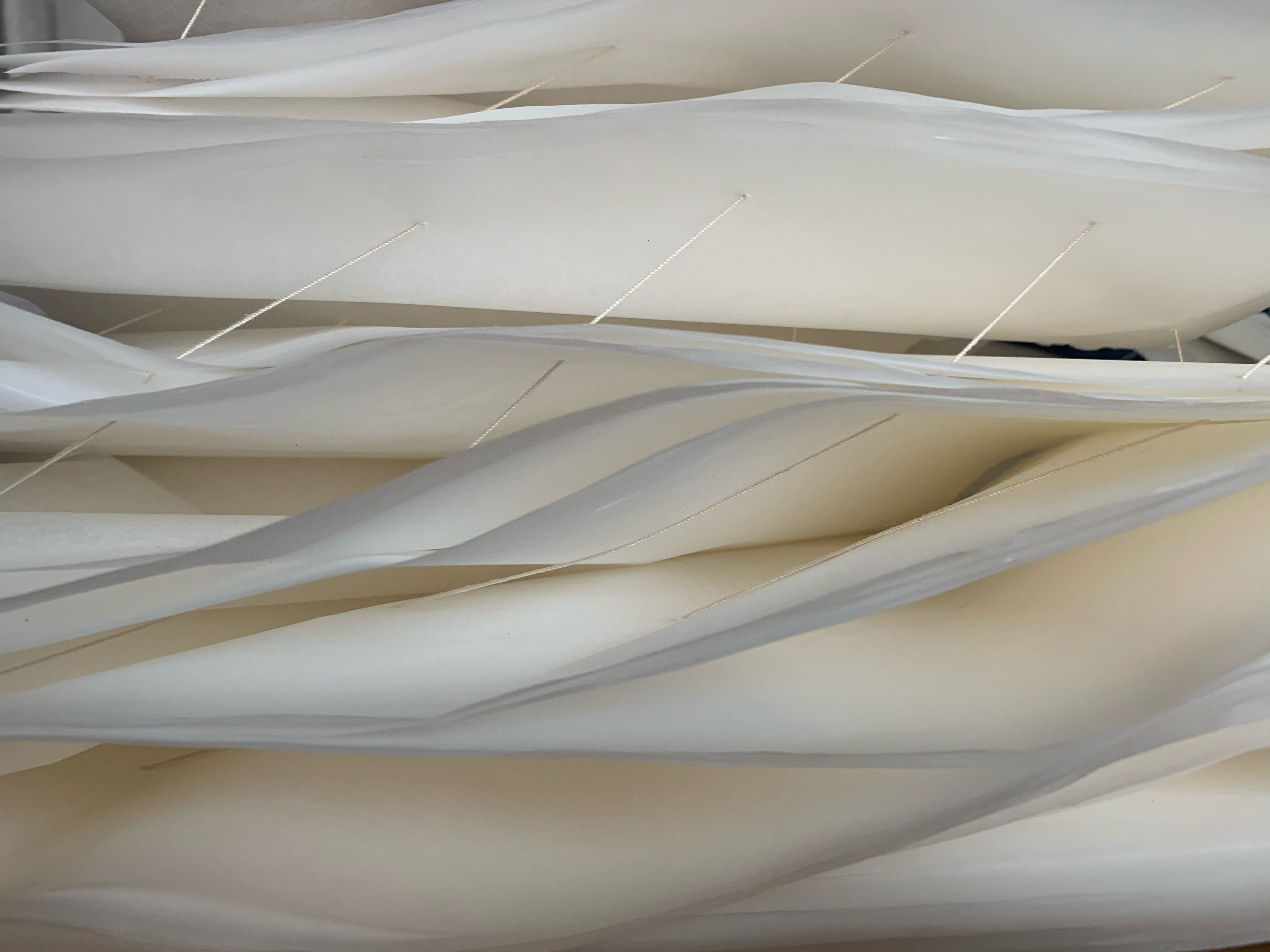





The observed flatness of Iowa’s farmland is purely visual. In all other aspects, this landscape is a constantly shifting mass sculpted by an ever present volume of air. Rural architecture in this context does not exist as volumes of mass placed on the landscape, but instead wraps the atmosphere in various skins. Functionally, this invited air is what makes these passive machines operate.
Observing Air, seeks to reveal the omnipresent atmosphere moving through and around the existing corn crib. Wind enters through openings and is diffused as it circulates throughout the bin. Layers of translucency are carved by the moving air creating constantly fluctuating voids and topographies. This consensual destruction results in a subsequent maturation of the sectional qualities of the drawing assembly. The distribution of vertical strings, in plan, creates a forgiving framework that gently anchors the layers in space.
When walking through the installation, an individual passes through a spectrum of distortion and clarity that is activated by the ensemble of forces and materials present. Upon entering the space, one is initially confronted with the ambiguous scale of the drawing assembly. The journey through this fluctuating environment stimulates a heightened awareness of the atmosphere.
Without a preconceived idea, Observing Air arose by a series of spatial inquiries, text, and constructions that take precedent in the effects of the context. As drawers, our relationships with the other contextual forces are symbiotic. The drawing assembly is a constructed framework that, through continuous weathering, articulates and brings clarity to specific elements of the larger context. An endless process that is not limited to its current spatial boundaries, the scale that the installation is deployed in is intentionally left to be perpetually destroyed. We did not construct an atmosphere, we revealed one.